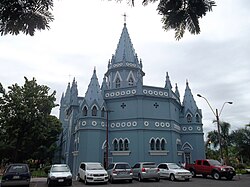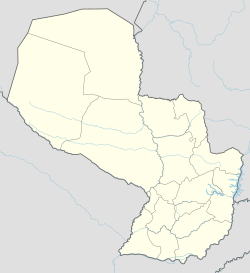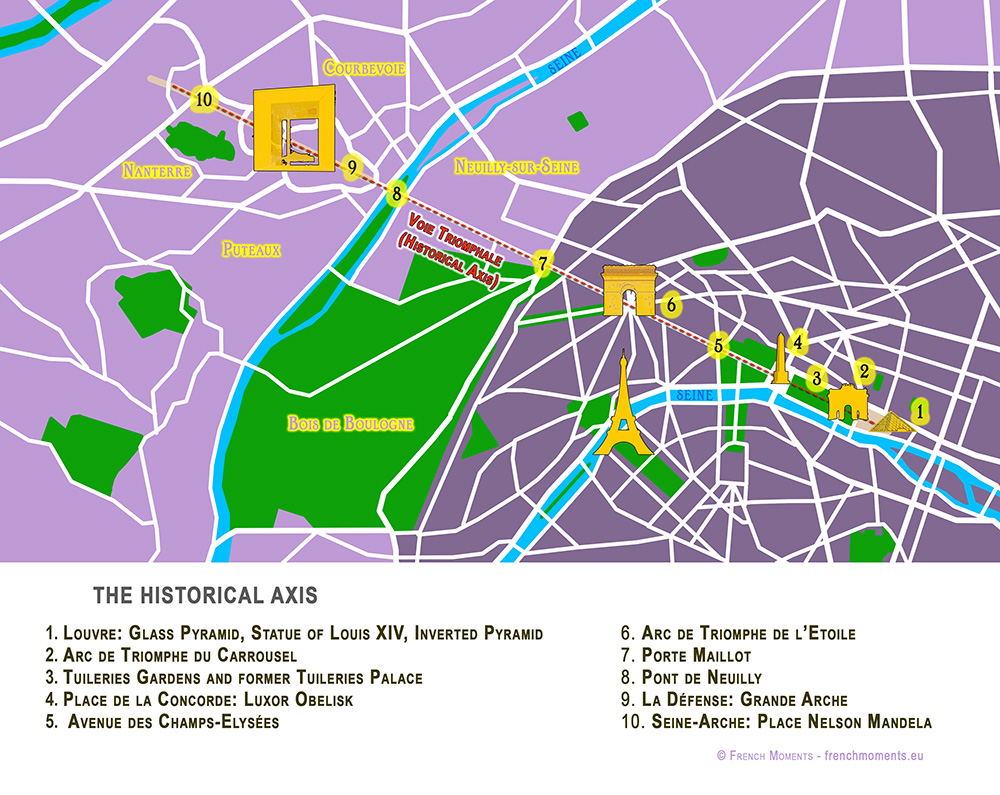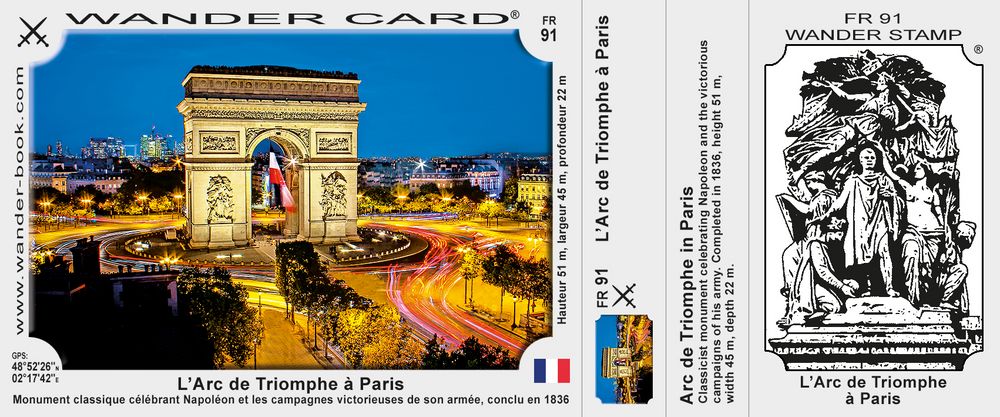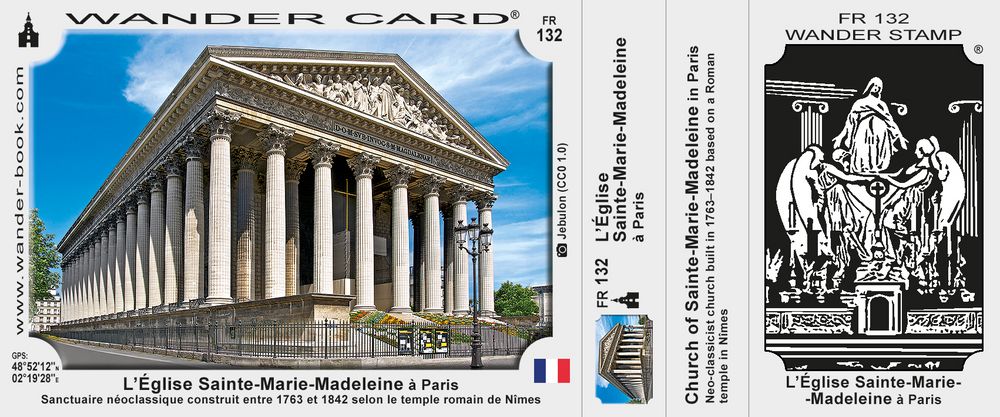|
|
https://www.lanacion.com.ar/cultura/hitler-sepultado-en-paraguay-el-escritor-abel-basti-afirma-que-los-restos-del-genocida-nazi-estan-en-nid13082024/ |
|
|
|
|
Thomas the Apostle
From Wikipedia, the free encyclopedia
This article is about the Christian saint. For the name "Thomas", see Thomas (name). For other uses, see Thomas.
Thomas the Apostle
|
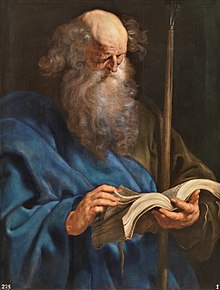
The Apostle Thomas, Rubens, c.1613
|
| Born |
1st century AD
Galilee, Judea, Roman Empire |
| Died |
AD 72
St. Thomas Mount, Early Chola dynasty (present-day Parangimalai, Tamil Nadu, India) |
| Venerated in |
All Christian denominations that venerate saints, especially Saint Thomas Christians |
| Canonized |
Pre-Congregation |
| Major shrine |
St. Thomas Cathedral Basilica in Mylapore, Chennai, India, St. Thomas Major Archi Episcopal Shrine, Palayoor Kerala, India,
Basilica of St. Thomas the Apostle in Ortona, Italy |
| Feast |
- 3 July: (Jacobite), Malankara Orthodox Church, Latin Church, Liberal Catholic Church, Anglican Communion, Malankara Mar Thoma Syrian Church, Syro-Malabar Catholic Church, Syro-Malankara Catholic Church, Believers Eastern Church, Syriac Catholic Church[2]
- 21 December: (Jacobite), Malankara Orthodox Church, some Anglican Communion, Hispanic church, Traditional Catholics, Lutherans
- 26 Pashons and Sunday after Easter (Thomas Sunday): Coptic Christianity Malankara Orthodox Church,[3]
- 6 October and Sunday after Easter Thomas Sunday: Eastern Orthodox
|
| Attributes |
The Twin, placing his finger in the side of Christ, nelumbo nucifera, spear (means of his Christian martyrdom), square (his profession, a builder) |
| Patronage |
Architects, for Christians in India (including Saint Thomas Christians and Archdiocese of Madras-Mylapore), Tamil Nadu, Sri Lanka, Pula (Croatia) and São Tomé and Príncipe |
Thomas the Apostle (Greek: Θωμᾶς, romanized: Thōms; Aramaic ܬܐܘܡܐ, romanized: Tʾōmā, meaning "the twin"),[a] also known as Didymus (Greek: Δίδυμος, romanized: Dídymos, meaning "twin"), was one of the Twelve Apostles of Jesus according to the New Testament. Thomas is commonly known as "Doubting Thomas" because he initially doubted the resurrection of Jesus Christ when he was told of it (as is related in the Gospel of John); he later confessed his faith ("My lord and my God") on seeing the places where the wounds appeared still fresh on the holy body of Jesus after the Crucifixion of Jesus. While it is often assumed he touched the wounds in art and poetry, the scriptures do not say that he touched the wounds, merely that Jesus invited him to do so, with it being unclear if he actually felt them.
 Thomas the Apostle, detail of the mosaic in the Basilica of San Vitale, Ravenna, 6th century
According to traditional accounts of the Saint Thomas Christians of modern-day state of Kerala in India, Saint Thomas travelled outside the Roman Empire to preach the Gospel, travelling as far as Kerala in South India, and reached Muziris (modern-day North Paravur and Kodungalloor in Kerala State) in AD 52.[8] In 1258, some of the relics were brought to Ortona, in Abruzzo, Italy, where they have been held in the Church of Saint Thomas the Apostle.[9] He is regarded as the patron saint of India among its Christian adherents,[10] and the Feast of Saint Thomas on July 3 is celebrated as Indian Christians' Day.[12][13] The name Thomas remains quite popular among the Saint Thomas Christians of the Indian subcontinent.
Many churches in the Middle East and southern Asia, besides India, also mention Apostle Thomas in their historical traditions as being the first evangelist to establish those churches, the Assyrian Church of the East,[14] the early church of Sri Lanka.[15]
Thomas first speaks in the Gospel of John. In John 11:16,[16] when Lazarus has recently died, and the apostles do not wish to go back to Judea, Thomas says: "Let us also go, that we may die with him."[b]
Thomas speaks again in John 14:5. There, Jesus had just explained that he was going away to prepare a heavenly home for his followers, and that one day they would join him there. Thomas reacted by saying, "Lord, we know not whither thou goest; and how can we know the way?"[18]
John 20:24–29[19] tells how doubting Thomas was skeptical at first when he heard that Jesus had risen from the dead and appeared to the other apostles, saying, "Except I shall see on his hands the print of the nails, and put my finger into the print of the nails, and thrust my hand into his side, I will not believe."[20] But when Jesus appeared later and invited Thomas to touch his wounds and behold him, Thomas showed his belief by saying, "My Lord and my God".[21] Jesus then said, "Thomas, because thou hast seen me, thou hast believed: blessed are they that have not seen, and yet have believed."[22]
Names and etymologies
[edit]
The name Thomas (Greek: Θωμᾶς) given for the apostle in the New Testament is derived from the Aramaic תְּאוֹמָא Tʾōmā[23] (Syriac ܬܐܘܿܡܵܐ/ܬ݁ܳܐܘܡܰܐ Tʾōmā/Tāʾwma), meaning "the twin" and cognate to Hebrew תְּאוֹם tʾóm. The equivalent term for twin in Greek, which is also used in the New Testament, is Δίδυμος Didymos.
Ancient oral tradition retained by the Guaraní tribes of Paraguay claims that the Apostle Thomas was in Paraguay and preached to them under the name of Pa'í Sumé or Avaré Sumé (while in Peru he was known as Tumé).[59]
in the estate of our college, called Paraguay, and twenty leagues distant from Asumpcion. This place stretches out on one side into a pleasant plain, affording pasture to a vast quantity of cattle; on the other, where it looks towards the south, it is surrounded by hills and rocks; in one of which a cross piled up of three large stones is visited, and held in great veneration by the natives for the sake of St. Thomas; for they believe, and firmly maintain, that the Apostle, seated on these stones as on a chair, formerly preached to the assembled Indians.
Almost 150 years prior to Dobrizhoffer's arrival in Paraguay, another Jesuit Missionary, F. J. Antonio Ruiz de Montoya recollected the same oral traditions from the Paraguayan tribes. He wrote:
...The paraguayan tribes they have this very curious tradition. They claim that a very holy man (Thomas the Apostle himself), whom they call "Paí Thome", lived amongst them and preached to them the Holy Truth, wandering and carrying a wooden cross on his back.
The sole recorded research done about the subject was during José Gaspar Rodríguez de Francia's reign after the Independence of Paraguay. This is mentioned by Franz Wisner von Morgenstern, an Austro-Hungarian engineer who served in the Paraguayan armies prior and during the Paraguayan War. According to Wisner, some Paraguayan miners while working nearby some hills at the Caaguazú Department found some stones with ancient letters carved in them. Dictator Francia sent his finest experts to inspect those stones, and they concluded that the letters carved in those stones were Hebrew-like symbols, but they couldn't translate them nor figure out the exact date when those letters were carved. No further recorded investigations exists, and according to Wisner, people believed that the letters were made by Thomas the Apostle, following the tradition.
|
|
|
|
|
San Lorenzo (Paraguay)
San Lorenzo es una ciudad paraguaya ubicada en el Departamento Central. Es conocida como la «Ciudad Universitaria», porque dentro de los límites del municipio se halla la sede central y el campus de la Universidad Nacional de Asunción, razón por la que el tránsito vial es muy constante debido a la concurrencia de estudiantes de otras ciudades.
San Lorenzo tuvo su origen con el establecimiento de una estancia dedicada a la explotación de plantaciones, que abarcaba el amplio espacio denominado «Ñu Guazú» o Campo Grande, instalaciones erigidas en el siglo xvii por los jesuitas. En ese lugar se establecieron las viviendas de los trabajadores conformando un asentamiento disperso, que era conocido como «Villa».
Según Dionisio González Torres, en su libro Origen e historia de los pueblos del Paraguay, en épocas coloniales los jesuitas tenían una chacra en ese lugar. El sitio estaba conformado por los
«cerros Barcequillo, Potrero y Capiíbary, la Chacrilla de Campo Grande con animales y una capilla en Tapyhipery, hoy Capilla-kué (según consta en el inventario de bienes de la Orden)»
En el mismo lugar donde actualmente está erigido el oratorio de «Nuestra Señora de la Asunción» estaba ubicada la capilla o iglesia construida por los jesuitas. Con el tiempo, este edificio fue deteriorándose hasta derrumbarse, el lugar quedó con el denominativo de «Capilla cue» (expresión en guaraní que indica lugar donde hubo una capilla).
Luego de la expulsión de los jesuitas del país, ocurrido en marzo de 1767, el gobernador Capitán Agustín Fernando de Pinedo incautó esas tierras, creando allí un pueblo y fija como fecha de fundación del mismo el 10 de agosto de 1775.3 Por Orden Real del gobierno de la Provincia del Paraguay, se instaló en 1779 una fábrica de tabaco negro con la dirección de técnicos portugueses y operarios indios traídos de Yaguarón. La fábrica tuvo corta vida.
El asentamiento tuvo dos patronos: el 10 de agosto se celebra el día de San Lorenzo y el 15, el día de la Virgen de la Asunción. En atención a la medida administrativa asumida por el Capitán Agustín Fernando de Pinedo, el 10 de agosto de 1775, se fija como feriado distrital y del Santo Patrono, donde se celebran los festejos conmemorativos del aniversario de la ciudad.
La ciudad de San Lorenzo se encuentra en el Departamento Central, a 9 kilómetros de la capital de la República. Forma parte del conglomerado urbano llamado Área Metropolitana de Asunción o Gran Asunción. Limita con los siguientes municipios: al norte con Luque, al sur con Ñemby, al este con Capiatá y al oeste con Fernando de la Mora.
San Lorenzo tiene según la clasificación climatica de Köppen un clima subtropical húmedo (Cfa) con verano caluroso y casi bochornoso, otoño y primavera cálidos e invierno relativamente templado. La temperatura media anual es de 25-30 °C. El mes más frío es julio y el más caluroso es enero. Las lluvias son comunes en gran parte del año; solo junio y julio son semisecos mientras los demás meses son lluviosos.
|
|
|
|
|
Paraguarí
Paraguarí es una ciudad de Paraguay, capital del departamento homónimo. Se ubica a 66 km de Asunción, conectada por la Ruta PY01.
 Gobernación de Paraguarí, donde se reconoce a la ciudad como "Cuna de la Independencia".
Paraguarí es llamada "Cuna de la Independencia Nacional", ya que en el combate de Cerro Mba'e, del 19 de enero de 1811, las tropas paraguayas al mando del gobernador español Bernardo de Velasco y los paraguayos Yegros y Cabañas derrotaron al ejército de la junta de Buenos Aires al mando del coronel (luego general) Manuel Belgrano. Esa acción fue uno de los factores que permitió al Paraguay separarse de la influencia de esa junta lo que más tarde desembocaría en la Independencia del Paraguay.
Fue fundada en 1775 sobre una colina, por Agustín Fernando de Pinedo, tiempo después de la expulsión de los jesuitas del Paraguay. El 18 de agosto de 1960 se constituye en Distrito.
 Catedral de Santo Tomás Apóstol (Paraguarí).
Fundada por Agustín Fernando de Pinedo por orden de Carlos III, Rey de España, luego de la expulsión de los jesuitas, se apoderó de sus bienes: las estancias de Paraguarí “Tavapy” y “Campo Grande”.
En Paraguarí se instalaron numerosos españoles, oriundos de Burgos y Andalucía, a quienes les gustaba la corrida de toros, por lo que la ciudad es conocida como “cuna de toreros”.
La Compañía de Jesús en el siglo xvii se estableció en Paraguarí en una gran estancia que se mantuvo hasta la expulsión por el Rey Carlos III.
La ciudad de Paraguarí está situada a 66 km de la ciudad de Asunción, bordeada hacia el norte por la serranía de la Cordillera de los Altos y hacia el sur por una extensa sabana. Está rodeada por los cerros Santo Tomás, Cerro Peró (Cerro Pelado), Cerro Hü (Cerro Negro) y el Cerro Mba'e (Porteño).
Limita al norte con Pirayú; al este con Escobar, al sur con Sapucaí, Acahay y Carapeguá; al oeste con Yaguarón.
La temperatura media es de 21 °C, la máxima en verano 43 °C y la mínima en invierno, 2 °C.
Paraguarí tiene un total de 20 678 habitantes según datos oficiales del censo paraguayo de 2022.
|
|
|
|
|
Revelan el lugar en Asunción donde supuestamente enterraron a Hitler
Autores brasileños exponen el sitio donde un militar asegura haber asistido al entierro de Adolf Hitler, en 1973, en un bunker secreto sobre la calle España. Actualmente hay allí un hotel. ¿Leyenda o misterio a desentrañar?
Enero 30, 2022 05:06 a. m. •
Un intrigante relato alternativo de la historia cobra de nuevo actualidad. La versión de que Adolf Hitler, el líder nazi que desencadenó la Segunda Guerra Mundial, acusado de terribles crímenes de guerra, no se suicidó en Berlín, Alemania, en 1945, sino que huyó a la Argentina, vivió en Brasil, murió en 1971 y fue enterrado por segunda vez en 1973 en Paraguay, en un bunker subterráneo sobre el que luego se construyó un hotel alemán, ahora adquiere nuevos datos, luego de que los investigadores brasileños Marcelo Netto y Aldo Gama han publicado el libro “O homen que enterrou Hitler” (El hombre que enterró a Hitler, Editora Contracorrente, Sao Paulo, 2021), en donde dan a conocer el lugar en que presuntamente se realizó la inhumación, en un céntrico sector de Asunción.
La historia se había conocido originalmente en 2014, con el libro “Tras los pasos de Hitler”, del argentino Abel Basti, que provocó gran impacto pero a la vez escepticismo, ya que no precisaba cuál era el hotel construido sobre la supuesta tumba de Hitler, según el testimonio del sargento del ejército brasileño Fernando Nogueira de Araujo, quien asegura haber asistido a una ceremonia fúnebre nazi secreta, en la noche del 1 de enero de 1973, en plena dictadura stronista.
Basti obtuvo la declaración de Nogueira en forma indirecta, a través del periodista brasileño Marcelo Netto, quien entrevistó varias veces al militar. Se especuló que el bunker sería un espacio subterráneo en el Hotel El Tirol, en Capitán Miranda, Itapúa; en el Hotel del Paraguay, en Asunción o en el Hotel del Lago, en San Bernardino, a cuyos propietarios fundadores se los vincula con la historia de los nazis en el Paraguay, pero ahora se revela que no era ninguno de los tres, sino otro diferente.
La revelación. “A diferencia de Basti, hemos preferido demorar 14 años para dar a conocer esta historia en un libro, esperando comprobar muchas cosas de las que nos contó el señor Fernando”, destaca Marcelo Netto, en diálogo con ULTIMA HORA desde Sao Paulo.
 Recibí las noticias en tu celular, unite al canal de ÚH en WhatsApp Recibí las noticias en tu celular, unite al canal de ÚH en WhatsApp
El periodista mantuvo contacto por primera vez con Nogueira de Araujo el 23 de mayo de 2007, cuando este lo visitó en la Redacción del periódico donde trabajaba, en Sao Paulo, Brasil, para contarle la historia que en ese momento le resultó increíble.
En la ocasión, el militar le pidió que anote la dirección del lugar al que sus amigos nazis le trajeron en un tour clandestino: “rúa (calle) España, 202. Asunción, Paraguay”. En ese momento solo había una construcción subterránea con dos o tres pisos, al que se bajaba con una especie de ascensor. “Después construyeron encima un hotel alemán”, le dijo.
Netto es un periodista de reconocida trayectoria en Brasil, quien trabajó en el diario Folha de Sao Paulo. En 2012 viajó a Asunción para entrevistar al entonces presidente Fernando Lugo y se acercó a verificar qué había en el número 202 de la calle España.
“Tal como el señor Fernando nos contó, encontré allí el Hotel Palmas del Sol, propiedad de una Sociedad de Ayuda Germano Paraguaya, de Independencia, justamente la colonia alemana donde se creó el partido nazi paraguayo en 1928. Me alojé allí. No me fue posible confirmar si había un búnker debajo y si el supuesto féretro de Hitler continúa allí, pero me llamó la atención el desnivel en varias partes de la construcción”, indica.
Netto describe que, al entrar y pasar la recepción del hotel, “es necesario bajar unos escalones, por lo que el suelo esta por debajo del nivel de la calle. La cocina estaba aún más abajo, prácticamente en el sótano. Algunas habitaciones del hotel rodean un “jardín de invierno” al aire libre, con algunas palmeras. Pensé: si el búnker está aquí abajo, esta es la razón por la que, en 2003, no pudieron construir habitaciones sobre el césped que el señor Fernando dice haber encontrado 30 años antes, en 1973. Lo mismo ocurre con el propio búnker de Hitler en Berlín, que hoy está escondido bajo un estacionamiento”, destaca
Con su colega Aldo Gama, decidieron contar la historia en el libro, como una novela que mezcla realidad y ficción, aportando los detalles que pudieron descubrir. “Si a alguien le interesa el tema, seguramente se podrá hacer una verificación en el lugar”, indicó el investigador.
En el libro, la dirección del hotel se brinda en código, con números, letras y signos distribuidos en color rojo, a lo largo de las páginas, hasta formar las coordenadas 25º17'03.0"S57º37'34.2"W, que, al ponerlas en Google Maps, conducen al lugar sobre la calle España.
https://www.ultimahora.com/revelan-el-lugar-asuncion-donde-supuestamente-enterraron-hitler-n2984233 |
|
|
|
|
Paraguay was infamous as a favorite hiding destination of Nazi fugitives after World War II. But the links to Nazism actually go much farther back -- and live on: Hotel Del Lago, which was frequented by severable notable Nazi supporters before the war, is
Hotel del Lago (Julien Rotelarosow)
Paolo Manzo
November 03, 2011
SAN BERNARDINO - Experiencing the Nazi legacy in South America costs just $40. This is the rate to spend a night in the best room of the Hotel del Lago, founded in 1888 on the shores of the Ypacaraí Lake, in Paraguay, in the small town of San Bernardino, 50 kilometers east of the country's capital, Asuncion.
Given that Paraguay does not have access to the sea, the lake is the trendiest destination for a vacation. San Bernardino, however, is notorious as the place that sheltered Joseph Mengele, the Angel of the Death, a German SS officer and physician in the Nazi concentration camp Auschwitz-Birkenau.
After Germany's defeat in World War II, Mengele fled to South America where he hid for decades.
According to unproven theories, Mengele, one of the most wanted Nazi war criminals, died in San Bernardino, not in Brazil, as usually reported. Regardless, there are plenty of other phantoms from the past in this small town, which was founded in 1881 by five German families, and still hosts a German Mennonite colony. The hotel is still very popular and has a cultural center that promotes local craftsmanship. But behind its quiet façade and tropical setting, this village hides a long string of connections with Nazism.
Passing a 19th century Teutonic-style hall, a smiling waitress walks the visitor to the best suite of the hotel, and reveals other old stories. The German architect Wilhelm Weiler designed Hotel del Lago. In one of its rooms, Bernhard Förster -- husband of Elisabeth- Förster- Nietzsche, and brother-in-law of the philosopher Friedrich Nietzsche, a brave explorer but also a theoretician of anti-Semitism -- committed suicide. After the failure of his project to fund an Aryan colony in Paraguay, named Nueva Germania, Bernhard chose death before dishonor.
In the 1930s, Nazism became popular in Paraguay, and Förster was considered a hero to some. Adolph Hitler would later order German soil spread over his grave. Moving from the hall of the hotel to the suite, the visitor has to walk in front of Förster's room, number 19.
La Tigresa and Hitler
In one of the building's small towers, there is the favorite room of one of the most powerful women in San Bernardino, the French-German Hilda Ingenohl, known as "la Tigresa," due to her passion for hunting large felines. "She was a Nazi supporter, worshipped Hitler's ideas and claimed to be his friend," says a woman from San Bernardino, who didn't want to give her name. Ingenohl's life had many chapters. She was born in Paris in 1874, and was a nurse in Europe during World War I. Flying was another passion of hers. Some say she was actually a pilot during the war, and that she was one of the first women who attempted, unsuccessfully, an uninterrupted aerial circumnavigation of the world. After the end of the war in 1918, Ingenohl moved to South America. First, she went to Uruguay, upon the invitation of Grete Goetsch, wife of the German ambassador, then, to Argentina, where she directed the German Hospital in Rosario, and finally to San Bernardino, which she fell in love with. She bought 200 hectares of land, but she spent most of the time in the room in the tower of Hotel del Lago.
Today, that same room still features a king-size-bed, a closet with a mirror, and large balcony which looks over the entrance of the hotel. This was Ingenohl's small kingdom, where she planned her frequent trips to Europe. She loved classical music and founded a youth orchestra. She had even met the famous Paraguayan musician Florentín Giménez. In 1953, she got cancer and moved back to Bonn, in Germany. The hotel claims other notable – non-Nazi – guests from the past, including the French writer and aviator Antoine de Saint-Exupéry and Swedish writer Ida Bäckmann. Still, it is the link to Nazism that remains a major skeleton for both this town, and the country as a whole. Even well before Mengele's sojourn after the war, it was in Paraguay, in 1927, that the first Nazi party outside of Germany was established.
Read more from La Stampa in Italian
photo - Julien Rotelarosow
https://worldcrunch.com/culture-society/in-paraguay-hotel-with-ugly-nazi-past-lives-on-as-quaint-tropical-escape
|
|
|
|
|
Earth from Space – Arc de Triomphe, Paris
Status Report
May 13, 2022

Arc de Triomphe, Paris.
ESA
This striking, high-resolution image of the Arc de Triomphe, in Paris, was captured by Planet SkySat – a fleet of satellites that have just joined ESA’s Third Party Mission Programme in April 2022.
The Arc de Triomphe, or in full Arc de Triomphe de l’Étoile, is an iconic symbol of France and one of the world’s best-known commemorative monuments. The triumphal arch was commissioned by Napoleon I in 1806 to celebrate the military achievements of the French armies. Construction of the arch began the following year, on 15 August (Napoleon’s birthday).
The arch stands at the centre of the Place Charles de Gaulle, the meeting point of 12 grand avenues which form a star (or étoile), which is why it is also referred to as the Arch of Triumph of the Star. The arch is 50 m high and 45 m wide.
The names of all French victories and generals are inscribed on the arch’s inner and outer surfaces, while the Tomb of the Unknown Soldier from World War I lies beneath its vault. The tomb’s flame is rekindled every evening as a symbol of the enduring nature of the commemoration and respect shown to those who have fallen in the name of France.
The Arc de Triomphe’s location at the Place Charles de Gaulle places it at the heart of the capital and the western terminus of the Avenue des Champs-Élysées (visible in the bottom-right of the image). Often referred to as the ‘most beautiful avenue in the world’, the Champs-Élysées is known for its theatres, cafés and luxury shops, as the finish of the Tour de France cycling race, as well as for its annual Bastille Day military parade.
This image, captured on 9 April 2022, was provided by Planet SkySat – a fleet of 21 very high-resolution satellites capable of collecting images multiple times during the day. SkySat’s satellite imagery, with 50 cm spatial resolution, is high enough to focus on areas of great interest, identifying objects such as vehicles and shipping containers.
SkySat data, along with PlanetScope (both owned and operated by Planet Labs), serve numerous commercial and governmental applications. These data are now available through ESA’s Third Party Mission programme – enabling researchers, scientists and companies from around the world the ability to access Planet’s high-frequency, high-resolution satellite data for non-commercial use.
Within this programme, Planet joins more than 50 other missions to add near-daily PlanetScope imagery, 50 cm SkySat imagery, and RapidEye archive data to this global network.
Peggy Fischer, Mission Manager for ESA’s Third Party Missions, commented, “We are very pleased to welcome PlanetScope and SkySat to ESA’s Third Party Missions portfolio and to begin the distribution of the Planet data through the ESA Earthnet Programme.
“The high-resolution and high-frequency imagery from these satellite constellations will provide an invaluable resource for the European R&D and applications community, greatly benefiting research and business opportunities across a wide range of sectors.”
To find out more on how to apply to the Earthnet Programme and get started with Planet data, click here.
– Download the full high-resolution image.
|
|
|
|
|
| Foundation stone. On August 15, 1806, Emperor Napoleon I's birthday, the foundation stone of the building was laid at a depth of eight meters, between the two southern pillars. |
|
|
|
|
| Enviado: 21/10/2024 10:30 |
|
|
|
|
|
|
|
|
|
|
For unmatched gaming adventures, turn to 789CLUB where a dynamic community, exclusive bonuses, and trusted features await every player. |
|
|
|
|
With its cutting-edge technology and user-friendly design, Hitclub stands out as a premier platform that seamlessly blends smart investment strategies with engaging features for a dynamic and rewarding experience. |
|
|
|
|
NOHU brings the excitement of online slots directly to your device with an easy-to-navigate platform. Featuring an extensive range of games, nohu guarantees hours of entertainment with high-quality visuals and sound. It offers a secure environment with advanced encryption for safe transactions. |
|
|
|
|
Embracing innovation and a user-centric approach, king88 offers a comprehensive platform for betting enthusiasts, featuring diverse games, competitive odds, and secure transactions to ensure an unmatched entertainment experience. |
|
|
|
|
79SODO is the largest and most prestigious gambling site in Vietnam and Asia. A variety of betting and fighting game genres for players to choose from. 79sodo is addictive to play - join the experience now to receive great incentives from the house. |
|
|
|
|
With a modern interface and diverse betting options, 79sodo offers players the ultimate gaming experience with secure play, exciting rewards, and 24/7 customer support. |
|
|
 Primer Primer
 Anterior
45 a 59 de 59
Siguiente Anterior
45 a 59 de 59
Siguiente
 Último
Último

|










